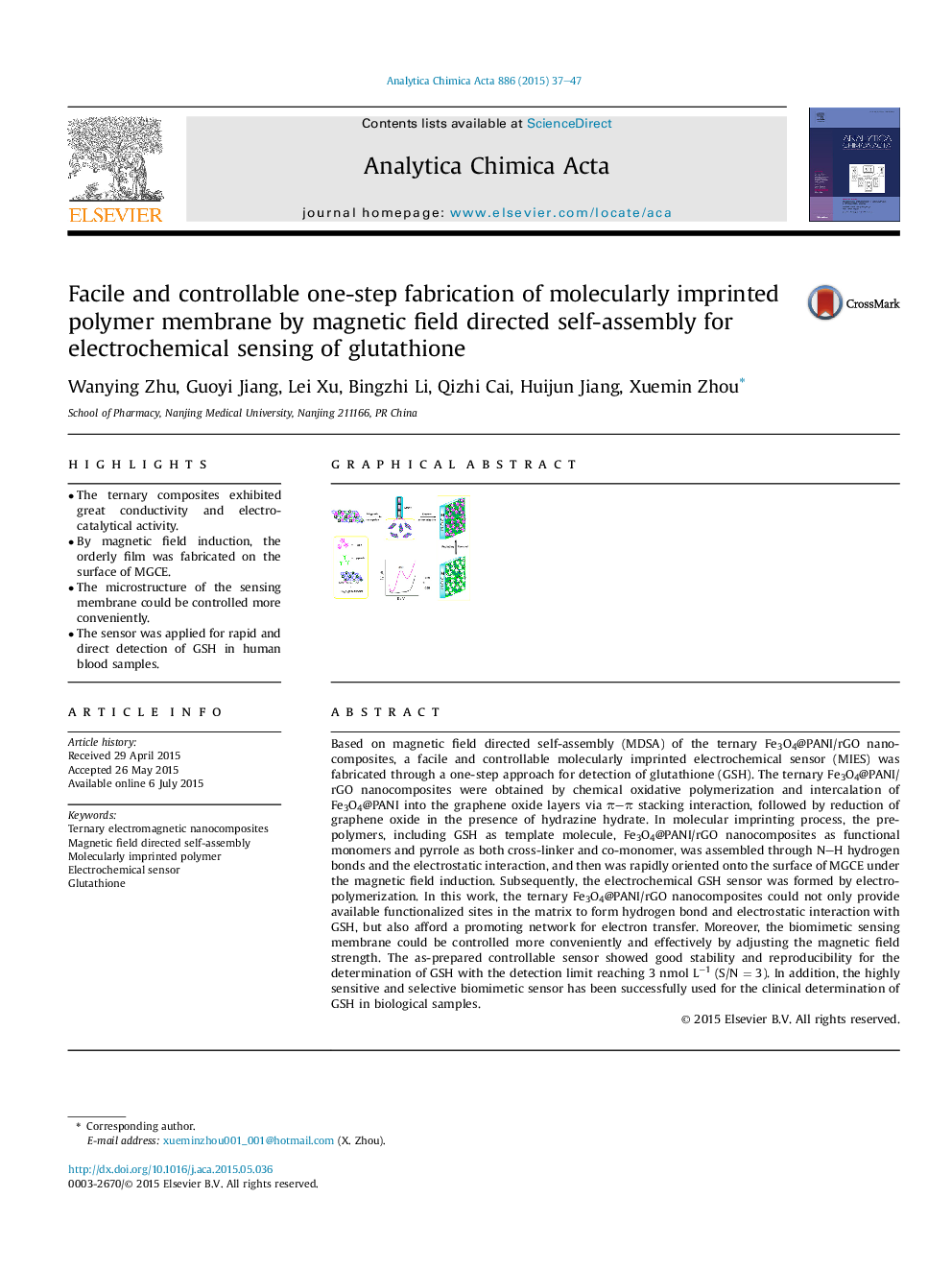| Article ID | Journal | Published Year | Pages | File Type |
|---|---|---|---|---|
| 1163724 | Analytica Chimica Acta | 2015 | 11 Pages |
•The ternary composites exhibited great conductivity and electrocatalytical activity.•By magnetic field induction, the orderly film was fabricated on the surface of MGCE.•The microstructure of the sensing membrane could be controlled more conveniently.•The sensor was applied for rapid and direct detection of GSH in human blood samples.
Based on magnetic field directed self-assembly (MDSA) of the ternary Fe3O4@PANI/rGO nanocomposites, a facile and controllable molecularly imprinted electrochemical sensor (MIES) was fabricated through a one-step approach for detection of glutathione (GSH). The ternary Fe3O4@PANI/rGO nanocomposites were obtained by chemical oxidative polymerization and intercalation of Fe3O4@PANI into the graphene oxide layers via π–π stacking interaction, followed by reduction of graphene oxide in the presence of hydrazine hydrate. In molecular imprinting process, the pre-polymers, including GSH as template molecule, Fe3O4@PANI/rGO nanocomposites as functional monomers and pyrrole as both cross-linker and co-monomer, was assembled through N–H hydrogen bonds and the electrostatic interaction, and then was rapidly oriented onto the surface of MGCE under the magnetic field induction. Subsequently, the electrochemical GSH sensor was formed by electropolymerization. In this work, the ternary Fe3O4@PANI/rGO nanocomposites could not only provide available functionalized sites in the matrix to form hydrogen bond and electrostatic interaction with GSH, but also afford a promoting network for electron transfer. Moreover, the biomimetic sensing membrane could be controlled more conveniently and effectively by adjusting the magnetic field strength. The as-prepared controllable sensor showed good stability and reproducibility for the determination of GSH with the detection limit reaching 3 nmol L−1 (S/N = 3). In addition, the highly sensitive and selective biomimetic sensor has been successfully used for the clinical determination of GSH in biological samples.
Graphical abstractFigure optionsDownload full-size imageDownload as PowerPoint slide
